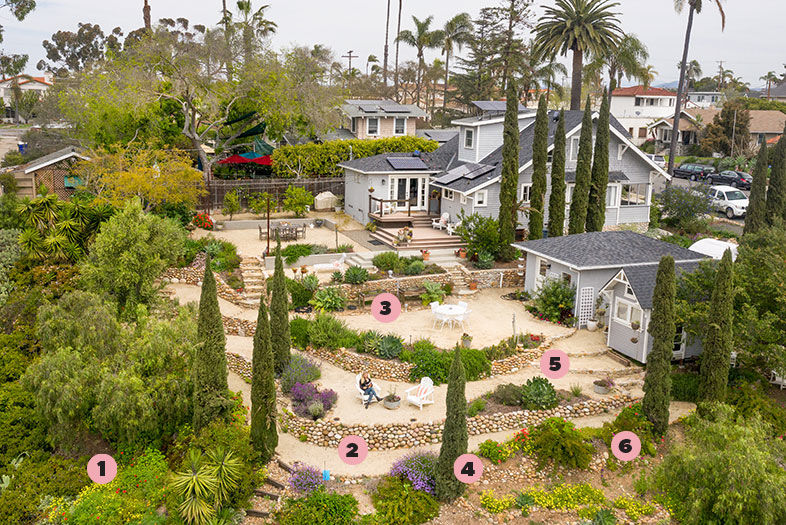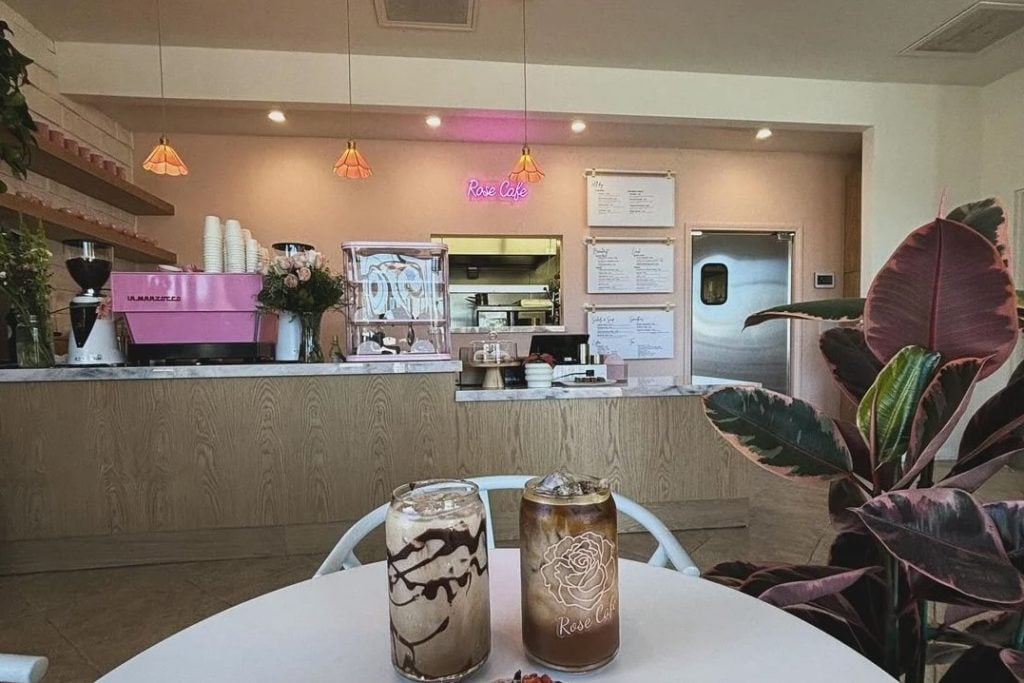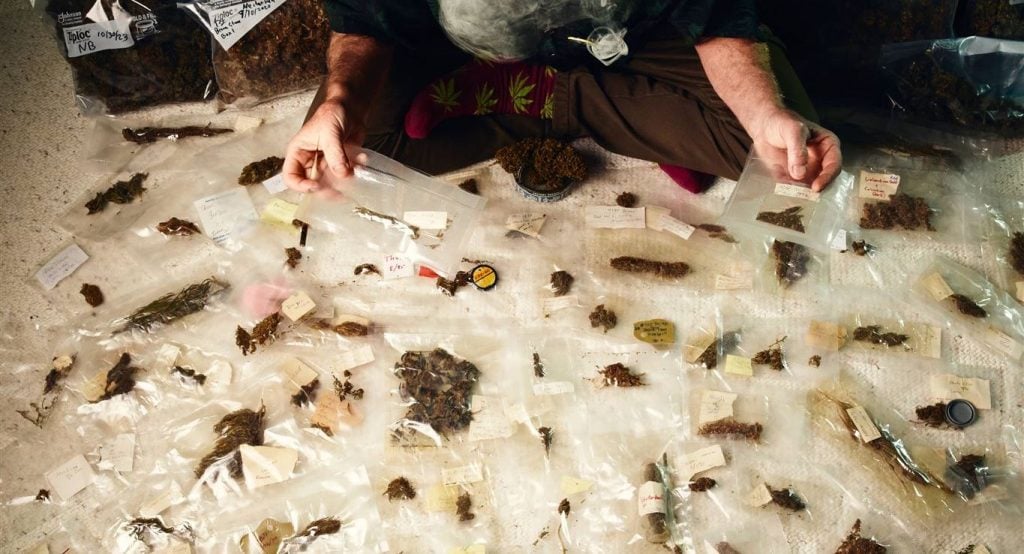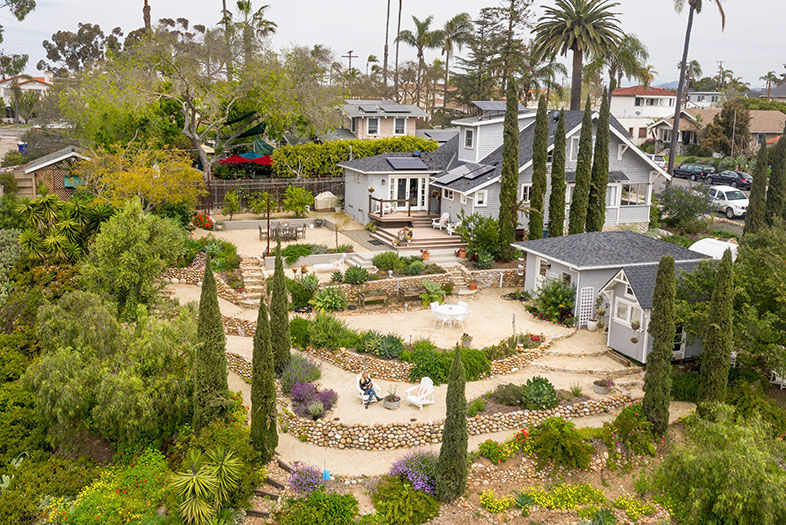
fireproof landscaping
Cathy Strittmatter in her University Heights backyard
Eucalyptus aside, the one thing Navid Mostatabi would never advise his clients to install in a fire-wise landscape? Cypress trees. “If one of these catches fire, they all can go up in flames,” he says.
When Andrew Guzzon and Cathy Strittmatter came to him after buying their University Heights home six years ago, there were upward of 40 cypress on their half-acre property, which feeds into a fire-hazardous canyon. They’re only the third owners of the historic home, which was built in 1914. The previous owner adored the green giants that grew in the untamed hills of the backyard. “We wanted to pay homage to him, but be safe,” Strittmatter explains. “We needed to clean them up.”
For Mostatabi, a landscape architect at Land Aesthetic, that meant removing the majority of those matchsticks and planting only low vegetation around the few left behind so flames would struggle to ascend them. They also tiered three terraces to slow down any flames that might inch toward the house, and scattered water-retaining foliage atop them that’s tough to burn.
At the bottom of the slope, fire-resistant plants are interspersed among wildflowers that welcome butterflies, wildlife, and, of course, the homeowners themselves. “Every time I go out, I can’t believe it’s my backyard,” Strittmatter says. “We’re so lucky to live in such a beautiful—and safer—place.”
Keys to the Garden
1. Ice plant
Because the homeowner wanted an area of wildflowers (that aren’t necessarily fire-resistant) to attract wildlife, Mostatabi mixed in ice plants (a common fire-resistant foliage) as a protectant.
2. Cobble walls
The terrace faces are made of cobble found on the property. They won’t burn and are permeable enough for water to seep through, helping moisten the ground.
3. Terraces
“All of these are just made of decomposed granite,” Mostatabi says. “For irrigation, this stuff drains better.” Most importantly, it doesn’t burn and creates obstacles flames have to hop before getting to the house.
4. Cypress
A fire wants to crawl. With this in mind, Mostatabi spaced out the remaining cypress trees and left little vegetation at the bottom of them.
5. Succulents
“They’re fleshy, with a lot of water stored, so they’re hard to burn.”
6. Pop-up sprinkler heads
“An irrigated landscape is going to be more fire-wise than a nonirrigated landscape,” Mostatabi explains. At the tip of the canyon, where fire is first likely to approach, he opted for pop-up sprinkler heads that spew more water than other methods.
Hot Topic
Ever since he founded California’s Own Landscape Design 24 years ago, Greg Rubin has been taking a contrary approach to fire-resistant landscaping—keeping homeowners’ native landscaping really well hydrated—and preaching his belief to fellow industry professionals. “They call me Reverend Rubin, which is funny because I’m Jewish.” (Last year, the San Diego Horticultural Society also called him Horticulturist of the Year.) Here are his 10 commandments—er, dos and don’ts—for fire-proofing your property.
â Don’t assume that just because it’s a native plant, it’s going to burn down your house. If we set them up correctly, they may ward off fire.”
â Do keep your native plants well hydrated. “Native plants are among the most fire-resistant plants available, when given supplemental light irrigation. They go from being fire bombs to fire-resistant. You can flick a Bic next to a well-hydrated manzanita, and it’ll laugh at you.”
â Don’t use drip irrigation to water your native plants. Use sprinklers instead. “How does Mother Nature water the plants?” Promoting the most natural conditions for your landscape means your landscape will prosper.
â Do adhere to the city of San Diego’s brush-management guidelines for fire-hazardous properties, mainly those along canyons: 30 to 50 feet from your home, keep only low-growing plants and ground cover; 50 to 100 feet, keep only low ground cover.
â Don’t have shrubs or other flammable items, like wood piles, right up against your house.
â Do weed and thin vegetation 30 to 100 feet from your property, but not too much.
â Don’t strip your landscaping entirely. “One of the worst things you can do is clear the ground all around your house.” That’s because your house becomes the only obstacle in the way of a fire. “It creates the perfect bowling alley for embers.”
â Do tend to leaves that have fallen on your roof. “The best predictor of fires is debris on a roof.” The city advises that tree canopies be at least 10 feet from the roof of your home.
â Don’t plant anything directly under the eaves of your house. “That’s one of the greatest little tricks that has worked for us.”
â Do know “you can’t guarantee a house won’t burn.”















